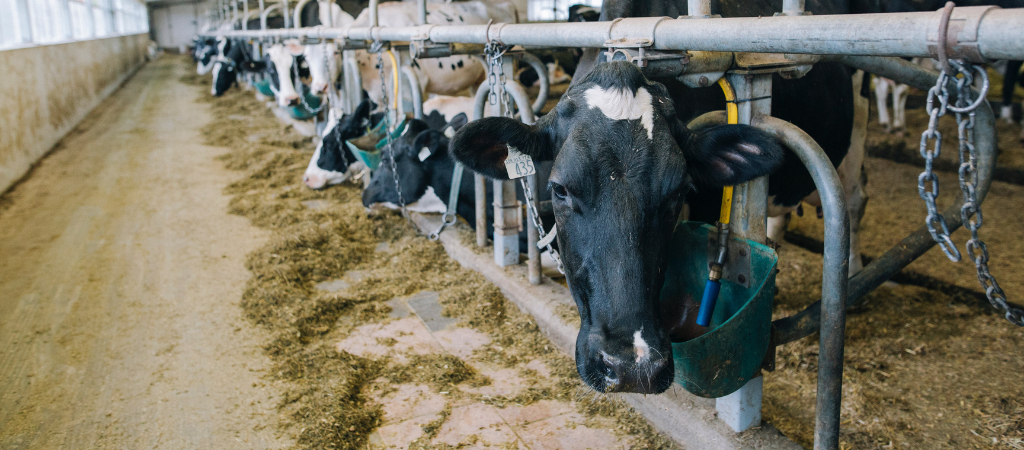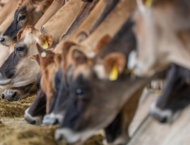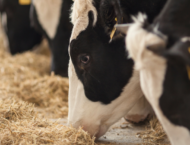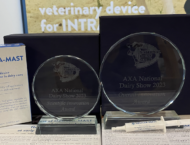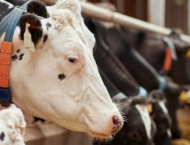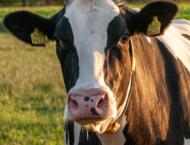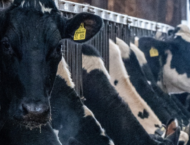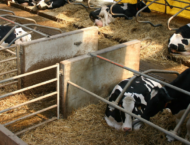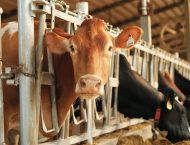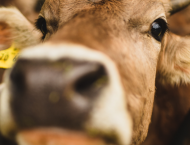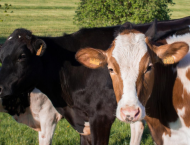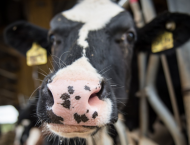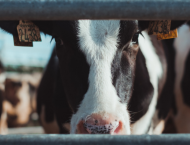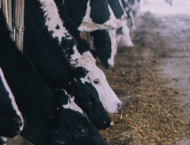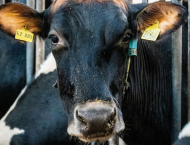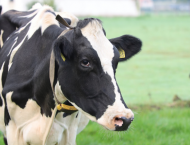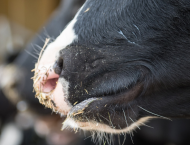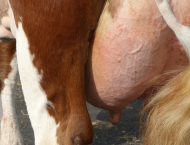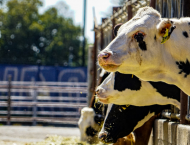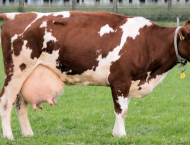After calving and expulsion of the placenta, four events occur simultaneously: uterine involution, endometrial regeneration, the return of the ovarian activity, and elimination of microbial contamination.
All this must occur without disturbances, as fertility is recognized as one of the main economic factors in dairy production.
Our focus in this article will be uterine involution, the natural stage during which the cow’s uterus regains its regular dimension. Delayed uterine involution may lead to perturbation of the reproduction and production cycles, and consequently to increased culling rates.
One significant sign of uterine involution is represented by abundant sloughing that is visible through vaginal discharge1. Initially, the discharge (or lochia) is bloody, as it contains uterine tissue, mucus and blood; in 2 weeks, it turns to yellowish and purulent in 2 weeks. In this period, lochia is often mistaken for a sign of uterine infection.
In 3 weeks, both the weight and the size of the uterus have decreased by 80% with respect to the size of the previous pregnant status. Generally, a new corpus luteum has been generated by 20 days. When there are no issues, the uterus will be void of accumulated fluids, even though the size of the uterus will continue to regress. In 40 days, size and weight of the uterus are static. The epithelium has been fully repaired and the uterine environment appears healthy.
What are the causes of delayed uterine involution and what the consequences?
Generally, in a herd 10% of the cows are predisposed to delayed involution. Among the causes, we can find metabolic diseases, injured endometrium, uterine infections (metritis, endometritis), traumatic parturition.
Any delay in uterine involution has severe consequences for the animals: reduced reproductive activity (retarded estrus start), greater days open2, higher risks of cystic ovaries, reduced likelihood of successful inseminations, increased involuntary culling rates.
How to avoid delayed uterine involution? The key points are: a good dry-off, a comfortable dry period, tailored nutrition, assistance provided during parturition, regular health checks in the post-partum, environmental hygiene. After calving, consider regular involution checks.
In one single word, effective management.
When uterine involution is almost complete (about 30 days after calving), there are no clear symptoms of metritis, however we may still detect abnormal non-severe vaginal discharge, there is a no-withdrawal solution to support tissue functionality and further boost the performance of the cow.
This tool is OZOLEA-METR, a non-pharmaceutical and no-withdrawal veterinary device for intra-uterine use. In late post-partum, OZOLEA-METR creates a film barrier in contact with the inner wall of the uterus. This physical barrier can temporarily attenuate the causes of bacterial proliferation and metritis occurrence, thus boosting herd productivity.
References
1 The meaning of vaginal discharge in dairy cows.
https://www.ozolea.it/the-meaning-of-vaginal-discharge-in-dairy-cows/
2 Improving days open: management is a must.
https://www.ozolea.it/improving-days-open-management-is-a-must/
Call, Edward P. (1989) “Involution of the uterus of dairy cattle,” Kansas Agricultural Experiment Station Research Reports: Vol. 0: Iss. 2. Doi: https://doi.org/10.4148/2378-5977.3007
P. Elsen Saut, R. Soares de Barros Ramos Oliveira, C. Fleury Guedes Martins, A. R. Ferreira Moura, S. Akemi Tsuruta, N. Resende Nasciutti, R. Maria dos Santos, S. Arlington Headley, 2011. Clinical observations of postpartum uterine involution in crossbred dairy cows. Vet.Not., Uberlândia, v.17. n.1, p. 16-25, jan./jun. 2011
Cover Image: Ph. MRC Témiscamingue. Image available here.

